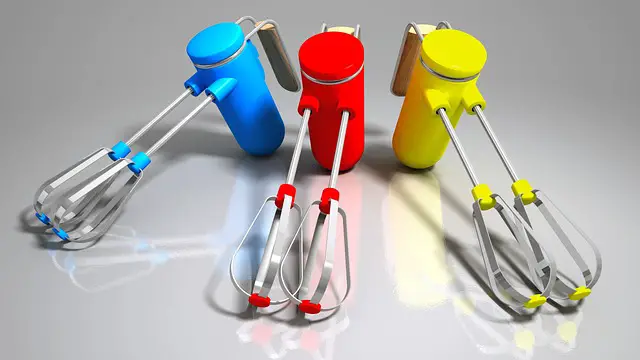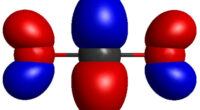Blenders have sharp blades for blending liquids and solids together into a smooth consistency, mixers come with various attachments to beat eggs, whip cream or knead dough effortlessly.
TL;DR Blender Vs. Mixer
Blenders are versatile kitchen appliances with sharp blades, ideal for blending and pureeing ingredients into smooth textures, while mixers come with various attachments and speed settings to combine ingredients for baking and other culinary tasks.
Blenders are great for smoothies, soups, and sauces, while mixers excel at whipping cream, beating eggs, and kneading dough.
What are blenders?
Blenders are versatile kitchen appliances with powerful motors and sharp blades, blenders are designed to blend, puree, and emulsify various ingredients. One of the key features of a blender is its ability to create smooth textures.
Whether you want to whip up a refreshing fruit smoothie or make velvety soups and sauces, a blender can effortlessly transform solid ingredients into silky liquids. Its high-speed blending action ensures that even tough ingredients like ice or frozen fruits are crushed into fine particles.
What are mixers?

Mixers are versatile kitchen appliances that are designed to combine ingredients together. Mixers have multiple speed settings and attachments such as beaters, dough hooks, and whisks, allowing you to tackle a variety of tasks.
A mixer is used for baking purposes. It is perfect for whipping up fluffy cakes, creamy frosting, or kneading bread dough effortlessly. With its powerful motor and different attachments, it can handle heavy mixing tasks that would be difficult to achieve by hand.
Mixers can also be used for other culinary endeavors. From making homemade pasta dough to blending pancake batter smoothly, a mixer provides convenience and efficiency in the kitchen.
Blender Vs. Mixer – Key differences
| Aspect | Blender | Mixer |
|---|---|---|
| Primary Function | Blends and purees ingredients into smoothies, soups, and sauces. | Mixes and combines ingredients for baking and food preparation. |
| Blade Configuration | Typically has sharp and angled blades suitable for liquefying and blending. | Equipped with various attachments like beaters and dough hooks for mixing and whipping. |
| Application | Ideal for making smoothies, shakes, purees, and emulsions. | Suitable for baking tasks like mixing dough, batters, and whipping cream. |
| Speed Control | Often features multiple speed settings, including pulse functions. | Offers variable speed controls for precise mixing and whipping. |
| Liquids Processing | Can handle liquids well and create uniform blends. | May require additional precautions as liquids could splash during mixing. |
| Motor Power | Generally designed with powerful motors for crushing ice and tough ingredients. | Motors are tailored for mixing and beating tasks, suitable for lighter loads. |
| Texture of Result | Produces smooth and consistent textures. | The texture of the mixture may vary depending on the attachment used. |
| Common Attachments | Usually comes with a blending jar or pitcher. | Includes beaters, dough hooks, and sometimes additional accessories. |
| Common Usage | Home kitchens, smoothie bars, and for making purees. | Home and professional baking, pastry making, and food preparation. |
| Limitations | Not suitable for heavy-duty mixing tasks like kneading dough. | Not designed for pureeing or blending tasks. |
| Examples of Brands | Vitamix, Ninja, Blendtec. | KitchenAid, Cuisinart, Breville. |
Appliances similar to blenders and mixers
- Food Processors: For chopping, slicing, grating, pureeing, and mixing.
- Immersion Blenders (Hand Blenders): These handheld appliances are used for blending and pureeing directly in the cooking pot or container.
- Stand Mixers: Useful for heavy-duty mixing tasks, like kneading dough, whipping cream, and making large batches of batters.
- Hand Mixers: Ideal for lighter mixing tasks, such as beating eggs, mixing cake batters, and whipping cream.
- Bullet Blenders: For making smoothies, protein shakes, and personal-sized portions of soups or sauces.
- Milk Frothers: Designed for frothing milk to create creamy, frothy textures for coffee drinks like cappuccinos and lattes.
- Spice Grinders: Used to finely grind whole spices and herbs, allowing you to achieve fresher flavors in your dishes.
- Hand-Cranked Egg Beaters: Used for whipping eggs and light mixing tasks. They are ideal for small-scale recipes and when electricity is not available.
- Juicers: Juicers are used to extract juice from fruits and vegetables, separating the pulp from the liquid.
- Food Blenders: Used specifically for blending and pureeing baby food. They ensure that baby food is smooth and safe for consumption.
What blenders and mixers used for?
| Purpose | Blender | Mixer |
|---|---|---|
| Blending | ✔️ Suitable for blending fruits, vegetables, and liquids to make smoothies, shakes, and purees. | ❌ Not designed for blending tasks; may not produce smooth textures. |
| Crushing Ice | ✔️ Can crush ice and frozen ingredients to make frozen drinks and desserts. | ❌ Not suitable for crushing ice; may damage mixer components. |
| Making Smooth Sauces | ✔️ Great for pureeing ingredients to create smooth sauces and soups. | ❌ Not designed for pureeing; may not achieve consistent results. |
| Mixing Batters and Doughs | ❌ Not designed for mixing heavy batters or kneading dough. | ✔️ Specifically designed for mixing batters and doughs, thanks to various attachments like beaters and dough hooks. |
| Whipping Cream and Eggs | ❌ Not ideal for whipping cream or beating eggs. | ✔️ Equipped with whisk attachments for whipping and beating tasks. |
| Making Pancake Batter | ❌ Not recommended for making pancake batter. | ✔️ Ideal for mixing pancake batter and achieving a smooth consistency. |
| Creating Emulsions | ✔️ Can create emulsions like salad dressings and mayonnaise. | ❌ May not effectively emulsify ingredients; could separate quickly. |
| Chopping or Grinding | ✔️ Some blenders have pulse functions suitable for light chopping or grinding tasks. | ❌ Not designed for chopping or grinding; limited blade configurations. |
| Making Nut Butters | ✔️ High-powered blenders can make nut butters with some effort. | ❌ Not designed for making nut butters; may strain the motor. |
| Mixing Cake Batter | ❌ Not suitable for mixing cake batter effectively. | ✔️ Excellent for mixing cake batter and achieving a smooth consistency. |
Advantages and disadvantages of mixers and blenders
Advantages of Mixers
- Versatility
- Precise Mixing
- Time-saving
- Heavy-duty capabilities
- Whipping and Beating
Disadvantages of Mixers
- Limited Blending
- Space and Cost
- Specific Tasks
Advantages of Blenders
- Smooth Textures
- Liquid Blending
- Convenience and Portability
- Multifunctional
- Easy to Clean
Disadvantages of Blenders
- Limited Mixing Functions
- Not Ideal for Heavy-duty Mixing
- Size and Storage Constraints
Image Credits
Featured Image By – Atle Mo on Unsplash
Image 1 By – YuliiaKa on Freepik
Image 2 By – Jean-Paul Jandrain from Pixabay








